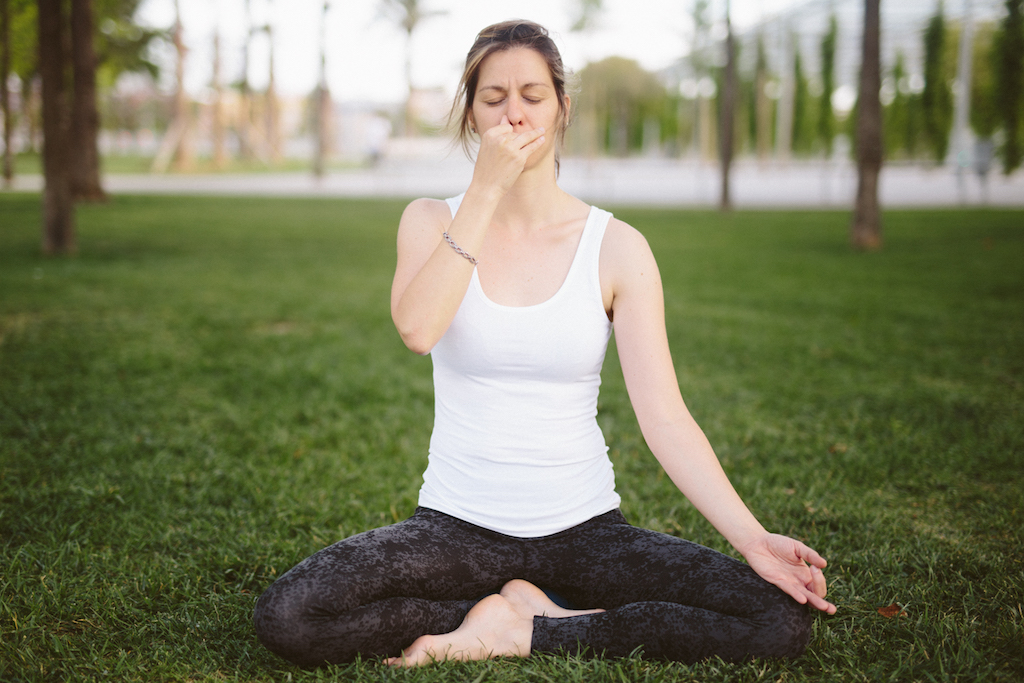1. Anuloma-viloma Pranayam
The anuloma-viloma technique (also known as “alternate nostril breathing”) is especially helpful when you are exhausted, stressed, or anxious. The slow, calming rhythm of anuloma-viloma brings natural rest to the mind, and releases tension from the stressed out parts of the body.
Steps To Perform :
- You can perform this technique either seated comfortably or lying down.
- Start by emptying out your lungs of air.
- Place a thumb on the left nostril and inhale for four seconds through the the right nostril. Make sure to inhale into your belly (not into your chest).
- Hold “full” for eight seconds.
- Before you exhale, switch your thumb to block the right nostril instead of the left. Exhale fully through the left nostril. The exhale should take four seconds as well. Hold “empty” for four seconds.
- Inhale through the left nostril (four seconds), and switch your thumb before you exhale through the right nostril (four seconds).
- This — inhale-right, exhale-left, inhale-left, exhale-right — constitutes one complete cycle.
- Use a four-count when you are starting out (inhale for four seconds, hold “full” for eight seconds, exhale for four seconds, hold “empty” for four seconds). Perform ten cycles, to feel the pranayama breathing benefits coming over your body.


